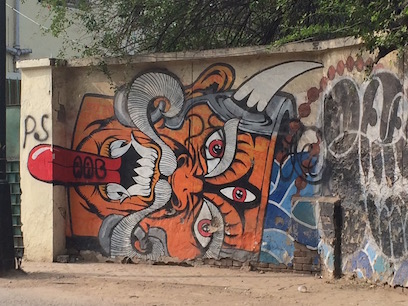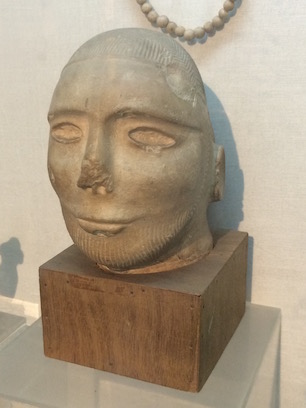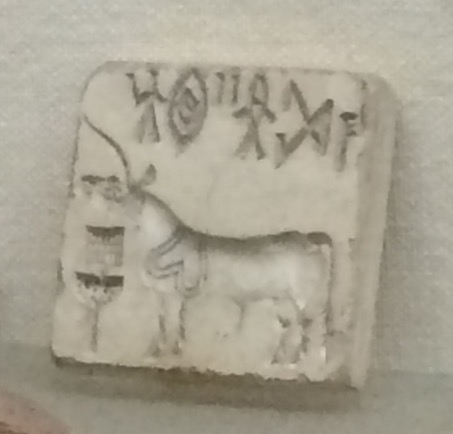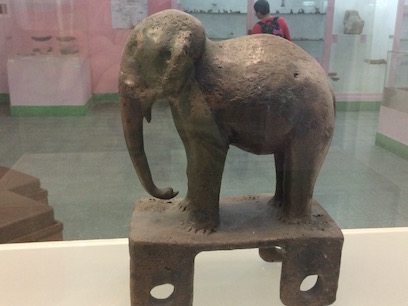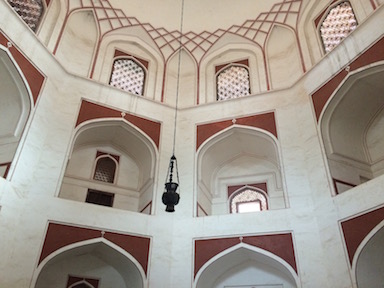Vikram Chandra wrote beautifully of the Indus Valley civilization in Red
Earth and Pouring Rain:
Suppose someone says, what really happened? Then say that once there were people
who built cities in the valley of the Indus, large teeming cities with broad
straight streets intersecting at ninety degrees, like a well-made grid. There
are some things that have appeared out of the drifting sands to speak
cryptically about these people; there is a statue of a sophisticated, gentle man
with contemplative, inward-looking eyes. There is a figurine of a dancing girl,
head proudly thrown back, hips carelessly and confidently thrust forward, hand
on waist, ready to break impulsively into movement. There are thousands of lines
of beautiful undecipherable writing on clay seals; on one of these seals
Pashupati sits in meditation, the supreme Yogi, the Lord of animals, the wild
king of the forest who holds the universe together with his dance, penis erect
in gathered energy. There is the figure of the bull, dewlapped and powerful,
repeated endlessly on the seals. There are the toys, the thousands of clay
animals and carts like the ones we see on country roads today. There are the
great baths, now empty; the wind shifts dust endlessly across the desert.
Where did this richness go? Is it true that a tribe riding chariots appeared out
of the western passes, filled with the uncouth strength of the steppes,
worshipping a rain-god soon to be called the Destroyer of Cities? Were there
massacres and raids and despair? Or did the river change course and leave the
long streets empty and silent? Or did the cities just grow old, very, very old,
and collapse in on themselves like a stand of dying trees? Nobody knows, but we
do know that Shiva still meditates endlessly among the awe-struck animals, that
the legends of the chariot-riding Aryans speak of old dark-skinned Asuras, who
imparted knowledge of secret sciences to chosen students, that brave adventurers
fell in love with the daughters of their enemies, the ones from before, the ones
who worshipped old gods, that the sounds of the languages of the south seem to
fit the strokes of that undecipherable writing,…
The Aryans moved west and south, clearing forests for their cattle, and Indra
the thunder-god became Indra the Destroyer of Cities. But, though cities are
often destroyed, sometimes they do not vanish, sometimes they become invisible
and invade the hearts and minds of the destroyers, who then live forever
changed.
At the National Museum, we got to see most of the works Chandra referred to in
that excerpt. I suspect he meant the Karachi carving as the
“sophisticated, gentle man”, though he may have had in mind another
wonderful head of a priest from Mohenjo-daro that we saw today. His famous
dancing girl was there, “hips carelessly and confidently thrust
forward”, and look at this elegant male torso:
|



